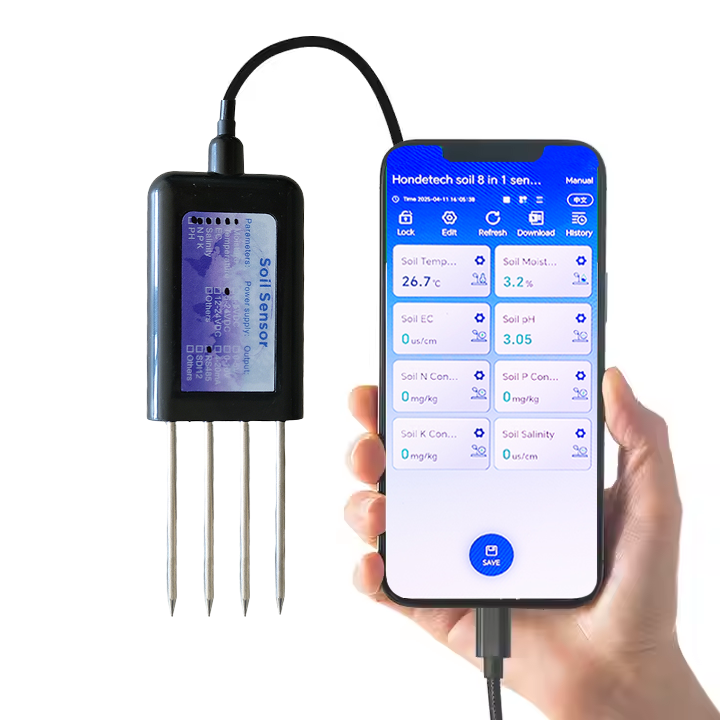With the continuous development of modern agriculture, how to increase crop yields, optimize resource allocation and reduce environmental impact has become a common challenge faced by farmers and agricultural science and technology workers. Against this backdrop, the application of agricultural greenhouses is becoming increasingly widespread, and soil sensors, as an innovative agricultural technology tool, are providing strong support for the sustainable development of agriculture.
The basic principle of soil sensors
Soil sensors are devices that monitor the soil environment in real time by collecting various physical and chemical parameters in the soil, such as soil moisture, temperature, pH value and nutrient content, etc. These sensors can help agricultural producers understand the condition of the soil in real time, thereby making more scientific management decisions.
2. Advantages of soil sensors
Precision agricultural management
Soil sensors can provide farmers with real-time data feedback, helping them to control management measures such as irrigation, fertilization and soil improvement more precisely. By analyzing soil data, farmers can adjust agricultural operations according to actual needs, thereby improving the efficiency of resource utilization.
Increase crop yields
By monitoring soil conditions, farmers can promptly detect changes in various indicators in the soil, ensuring that crops grow under the best conditions and ultimately achieving an increase in yield.
Save costs
Precise soil management can effectively reduce the waste of water and fertilizers, lower production costs, and enable farmers to achieve better economic returns.
Environmental protection
By using water and fertilizer rationally and reducing the unnecessary use of chemical fertilizers and pesticides, pollution to the environment can be effectively reduced and the development of sustainable agriculture can be promoted.
3. Application Cases
In practical applications, soil sensors have been successfully introduced into many agricultural greenhouses. For instance, in some vegetable greenhouses in Vietnam, soil moisture sensors are used to monitor soil moisture content in real time. Farmers can accurately grasp the irrigation time, avoid soil salinization caused by excessive watering, and improve the quality and yield of crops.
4. Future Outlook
With the rapid development of Internet of Things and big data technologies, the functions of soil sensors will become increasingly powerful. In the future, the integration of soil sensors will be combined with other information such as meteorological data and crop growth models to form a more intelligent agricultural management system. This will make agricultural production more efficient and scientific, thus embracing new opportunities for global agricultural development.
Conclusion
The application of soil sensors in agricultural greenhouses is not merely a technological innovation but also an important tool for promoting agricultural modernization and achieving sustainable development. As agricultural workers, we should actively embrace new technologies. Through continuous learning and application, we can enable soil sensors to bring more harvests and hope to agricultural production.
Promote soil sensors and let’s move towards a new future of smart agriculture together!
For more soil sensor information,
please contact Honde Technology Co., LTD.
Tel: +86-15210548582
Email: info@hondetech.com
Company website: www.hondetechco.com
Post time: May-14-2025


